https://www.youtube.com/watch?v=rfKus4c7XL4
How to Draw Face Using Reilly Method
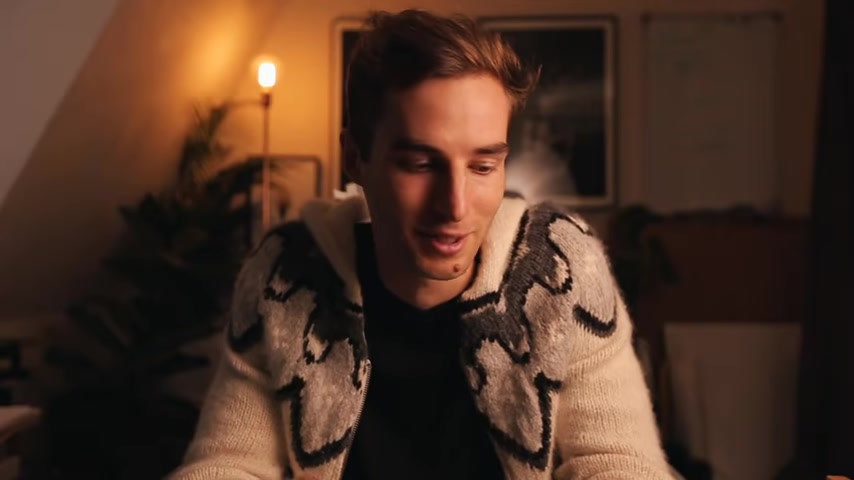
Hi , I'm Jono .
And if you're new here , I do pencil drawings .
In the last video , I critique some of the artwork and it was a lot of fun and the feedback has been incredible .
So I'm definitely going to do one of those again soon .
Um But in one of those critiques , I mentioned that the Riley Method might benefit um some , some artists .
So in this video , I wanted to actually explain what the Riley Method is and how you could use it and hopefully improve your portraits .
Before we jump into the Riley Method .
I just want to quickly take a moment and thank this video sponsor Squarespace .
They've sponsored almost all of my videos this year .
I'm sure you guys have noticed .
Um But it's just played a massive role in this whole youtube career .
I've been able to sustain this channel .
Thanks to them , which has been incredible .
So it , it's , it's meant a lot .
Also , I've been working with them for a long time .
I , I started working with them early on in my career when I was looking for a way to create an online portfolio and a way to try and create like a professional looking website .
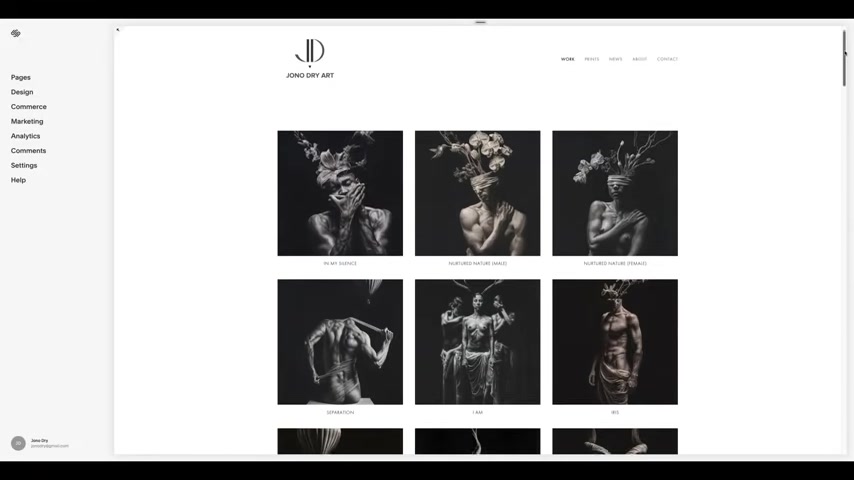
It was just such a convenient platform .
I never had to patch or upgrade thing .
I could register a domain with them or set up my online store .
And most importantly , I could design my portfolio and show my work the way that I wanted to .
Also , every time I got stuck there , amazing support team helped me out instantly .
So if you're looking at building a website , give squarespace a try .
And if you decide that you love them , use a soft code and get 10% off your first purchase .
So the writing method is basically just a set of guidelines and rhythm lines to help you get the proportions of the face right ?
And to help you understand the connection between different landmarks on the face , it's not meant to be followed .
Exactly , all it's meant to do is just help you kind of think in a way that might help your drawings or your portraits be firstly more accurate , but then also more dynamic .
I think the rhythm lines are quite helpful in understanding how how light will fall or in understanding the different planes of the face .
So I'm just gonna show you how to draw the the Riley method well , facial grid and then I'll show you a practical example of how it can be used .
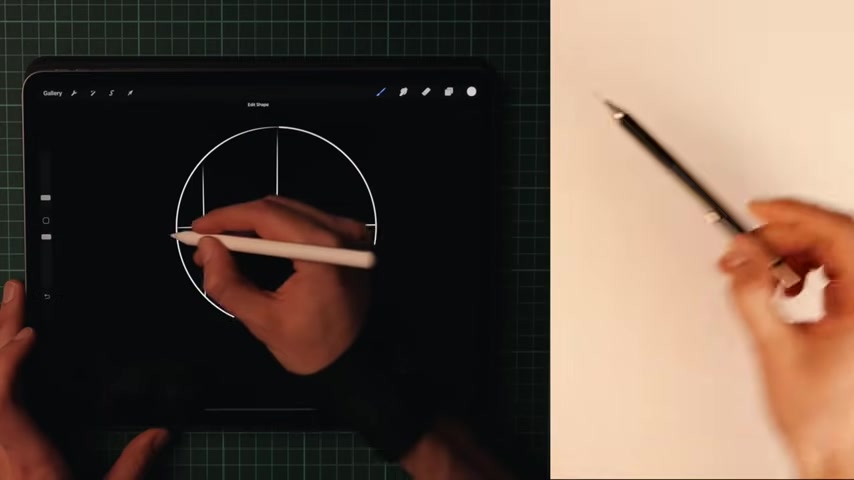
Let's jump into it .
We start off with a circle that's just gonna be like the main volume of the head coming up to around about the nose area and then we draw a line intersecting down the middle .
You can see how I'm cheating already .
So those really neat lines and we're gonna try and create a square and this square is gonna kind of represent the side of the face .
If I'm facing directly , this section here will kind of be this very foreshortened area going back towards the air and they don't have to meet up just eyeball it , try and make it a square .
Like I said , this doesn't have to be like absolutely perfect .
This is just a guideline to help you with some measurements .
What I like to do next .
I think I've seen loads of people do different versions of this .
So I'm just gonna use what I find useful in the Riley method and hopefully you can get something out of that for those of you who are very familiar with this , I'm probably gonna butcher it .
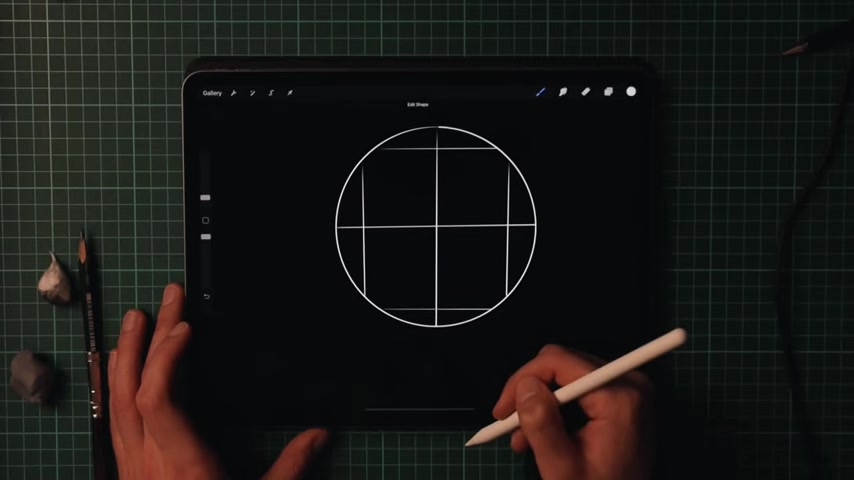
But for those who aren't , maybe this is like an easy way to get into it .
So yeah , I'll show you how I do it .
Basically , you're dividing the face into three sections .
This will be from the brow up .
This will be basically eyes and nose and then mouth and chin at the bottom area .
And those measurements depending on the model , but those measurements roughly equal each other .
So the way I like to kind of break that down is they bring that out here have a black , this thing is helping me so much .
All right .
So the distance between that should equal that as well .
So if we extend this line out here , you should kind of be the same and then you can bring that down and just eyeball it as well try to see if you can get it roughly the same in my mind .
That looks kind of OK .
So let's throw that across and this will roughly be the bottom of your chin .
Yeah , we'll have that there and extend this line down .
There we go .
And then I like to divide this middle section into thirds .
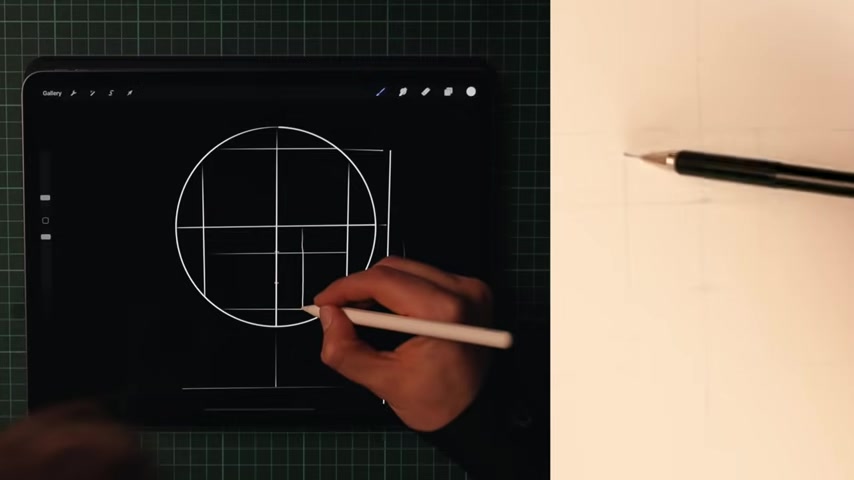
So I always get this wrong .
So I always have to like erase and get it right .
Well , turns out I got it right that time so that I got lucky and we can draw a parallel line going across .
I just wanna explain to you what I'm doing here basically .
So this line going across here that is gonna be basically your brow line , the line below it on that third will be intersecting the eye almost through the center maybe slightly lower .
I think what's important with this kind of stuff is to practice it so much that you start to realize where the tweaking happens .
So this is a guideline , but it's not perfect .
And you'll understand only through practice where it falls short and that's where you need to kind of put your initiative in or realize how it works for you .
And then we're gonna try and figure out how the nose is working .
So you're gonna see your model and see how wide the nose is and a basic measurement is at the side of the nose .
And the , what do you call this ?
The tear duct will line up .
We kind of we covered this in the nose tutorial .
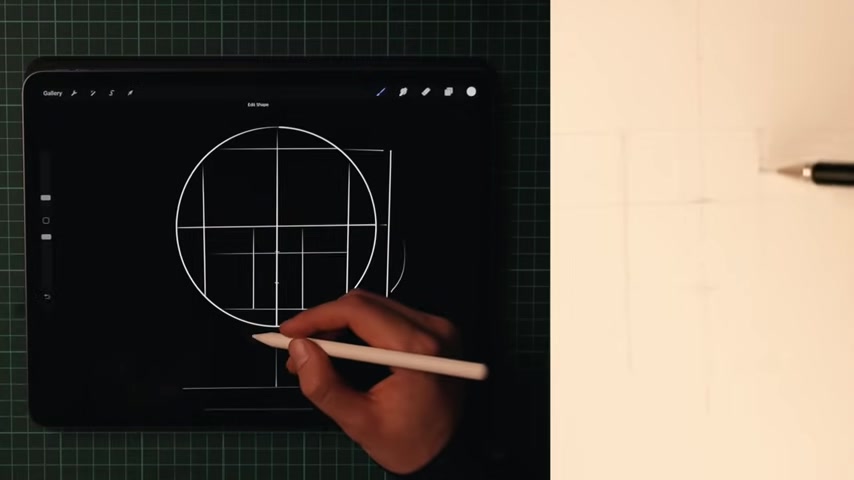
So let's have that going down like this .
So these lines will be the side of the nose .
We're gonna draw a bit of a triangle going from these two points down and slightly above where those intersect .
That will be the bridge of the nose over here then to try and get the base of the nose .
I usually like to in the nose tutorial .
I think I showed you to try and mark out where the bottom plane of the nose will be .
So it depends whether your subject is looking up or that will be more prevalent or it will be nonexistent at all .
But for me , most of the time when you draw a straight on portrait that'll be bottom plane of the nose .
I don't think that's actually included in any of the Riley method stuff , but I like to include it and just kind of going back to that knows the trail that we did .
These are the the wings of the nose or the nostril .
Yeah .
So we've got a very basic shape there from there .
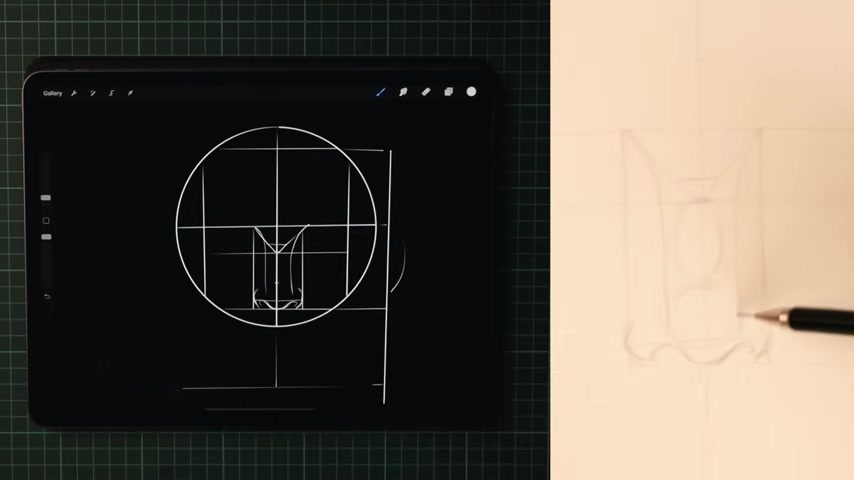
We get to guidelines that are moving up basically from the precipice of the , the nostril and this will go up and curve as we get to that brow line there .
Ok .
Not perfect .
It'll do then from the bridge of the nose .
I mean , we did the whole note tutorial , but we're basically just capturing a bunch of those things .
Again .
Here's the ball of the nose over here and the , the nostrils or the wings of the nose there , we also have a line going like that .
Let's divide this into thirds again .
And then there will be a rhythm line going from the bridge of the nose all the way to the chin , so we can bring that around .
And I'm not exactly sure how to describe this .
It goes something like that and this includes just kind of the eyeball socket and the sides like it doesn't quite include the space here because this is more captured by the ball of the mouth .
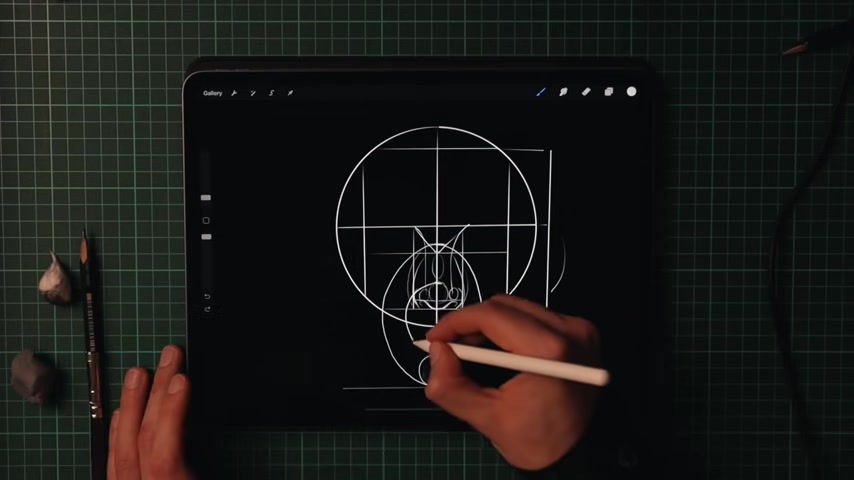
But it will help you just get a bit of shape .
Then we can do the ball of the mouth .
After that .
I just want to clean this up .
It's not looking great .
Ok ?
And then we have some rhythm lines that go from the end of the circle here , they can pass the nose and they just connect by the mouth here and that can often give you part of the line of the cheek .
Um So let's have a look at how that's gonna fall it'll move somewhat like that .
You can see some shapes are starting to happen here .
So that'll be the cheekbones starting to , to create some form .
Ok .
We're gonna have the mouth through this circle here .
I usually find that the angle of the jaw changes roughly around the line of the mouth .
So round about here , you'll find that the , the angle of the jaw will like come in .
There's more lines that meet up to the corner of the mouth on this point here .
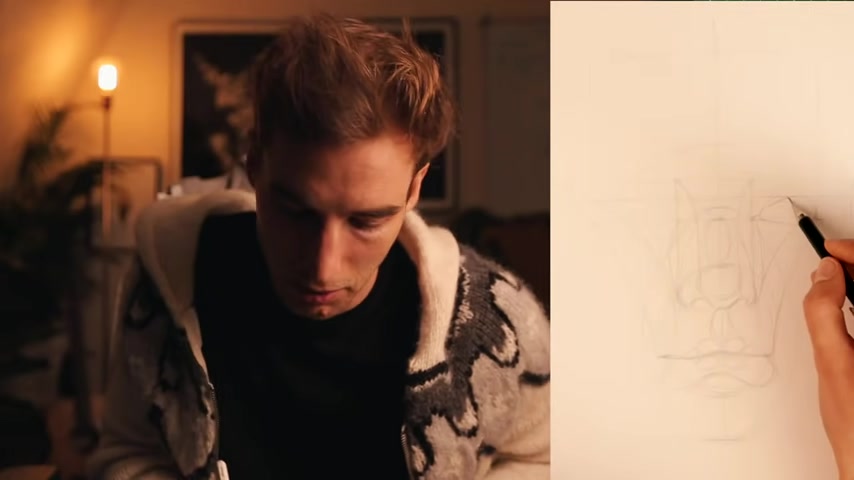
These are kind of like cheekbone lines and then there's also a line that gives you a very good idea of how the cheekbone is falling .
So the will be pretty much in line with the nostrils there .
And like I said , this line , I like to have that as pretty much a guideline for the center , lower center of the eyeball .
Another helpful line would be to try and see how high the eyes to the brow .
If the brow is very heavy , then the eye will be kind of closer to that .
If we draw an average person , let's just give them a bit of space like that .
So I don't know if you'll be able to see with me , but between the top of my eyelid and my eyebrow , that's the space or that's that measurement to keep my eye out for , then you will have a and I kind of quickly goes up to that point depending on the shape and let's bring it out all the way to here .
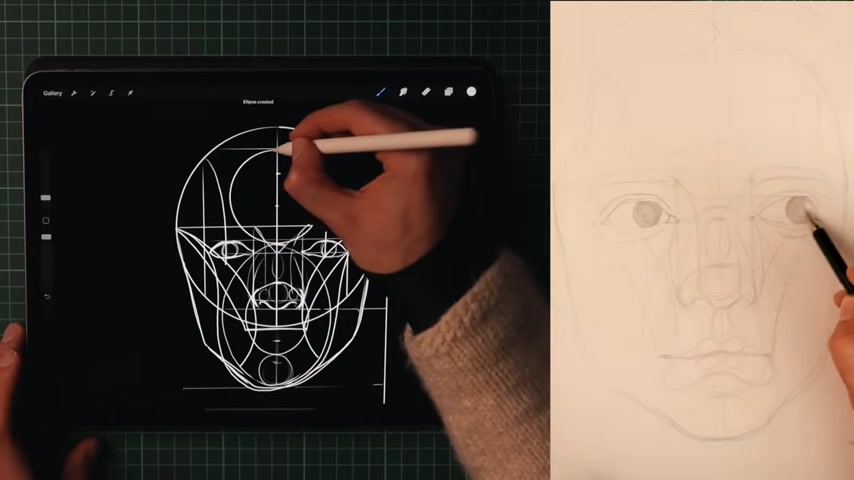
Then in the , at the top of the forehead , we have planes .
So coming from the corner of the square here , coming down roughly to the , where that line intersects over there .
And that'll just be the same thing of the head .
And then , and also most of the writing method diagrams , there's also this circle in the front of the forehead .
In some cases , it's useful in other cases , not so much .
It's kind of just up to you whether you want to use it or not .
OK .
So it looks hugely complex , but it's something to just try and practice a bunch of times .
There's it can get way more complex .
I mean , there's planes for the lips and the mouth and stuff as well that you know , from the nose .
If you draw the the full , you know , then these planes up here are also important to render .
You can have these , the gels almost of the mouth which help a lot with shadows .
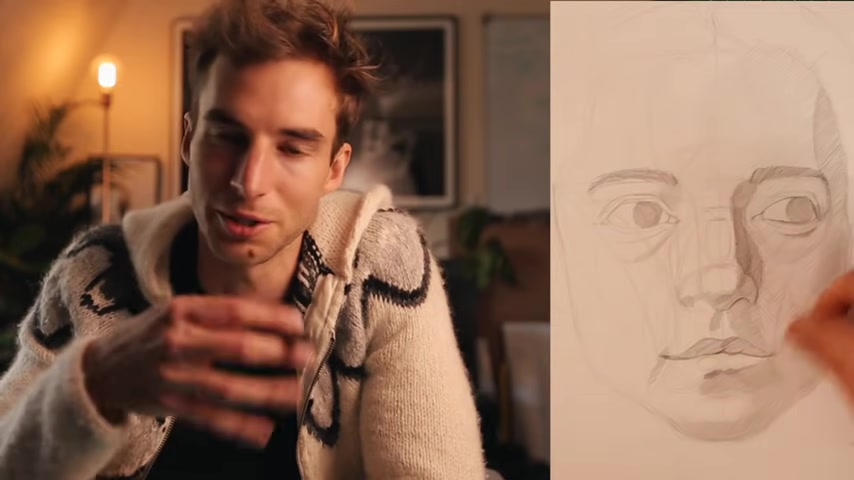
So these are , these are things you can add in as well .
So I've just given you guys the basics .
If you want to get way more into it , you definitely can .
But I found what I covered in this video .
That kind of stuff was all pretty helpful to me .
Um when I was just trying to find some structure to , to how I draw portraits .
So yeah , you can use it you can stick to it strictly .
I recommend maybe just letting it be a rough kind of guide and letting your , your model dictate obviously more how the facial features will , will sit .
So , yeah , I'd really , I'd encourage you guys to , to study it , to spend some time , try and copy it down exactly the way that I've drawn it or find a reference online and try and draw it like that and do it over and over again and try and see how long you can go without looking at the reference before you have to draw the next line .
And eventually you'll be able to just draw it out of your head .
It doesn't take that long to study this .
Actually , it's , it's pretty easy , but it's , it's just hugely helpful .
So I really recommend going that route .
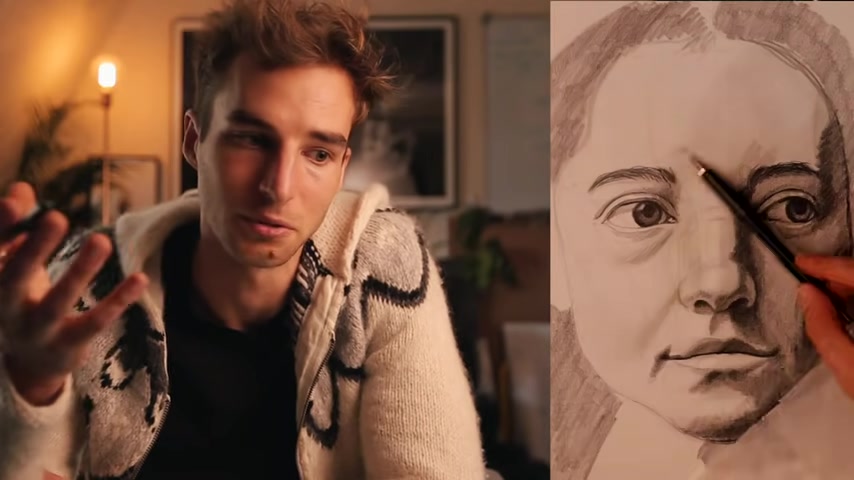
Um And eventually when you're doing portraits , you won't draw these lines at all .
These are , these are lines that you'll kind of know about and you can use them when you're doing portraits um without needing to actually physically have them there to , to reference .
So yeah , that's the Riley Method .
Um These methods are all kind of similar , the Luas Method Riley method .
They all use some similar principles which are universally true like the , well , some measurements , they're not all true .
People have crazy diverse faces and features .
But um yeah , it helped me a lot .
Let me know in the comments if there's any other methods you'd like me to cover or even that I , you know , might help me out .
Um I'd love to hear about it .
Leave a like if you found this video helpful , it helps the channel out in a huge way .
And as always , thanks for the support and I'll see you guys in the next one .
Bye .
Are you looking for a way to reach a wider audience and get more views on your videos?
Our innovative video to text transcribing service can help you do just that.
We provide accurate transcriptions of your videos along with visual content that will help you attract new viewers and keep them engaged. Plus, our data analytics and ad campaign tools can help you monetize your content and maximize your revenue.
Let's partner up and take your video content to the next level!
Contact us today to learn more.